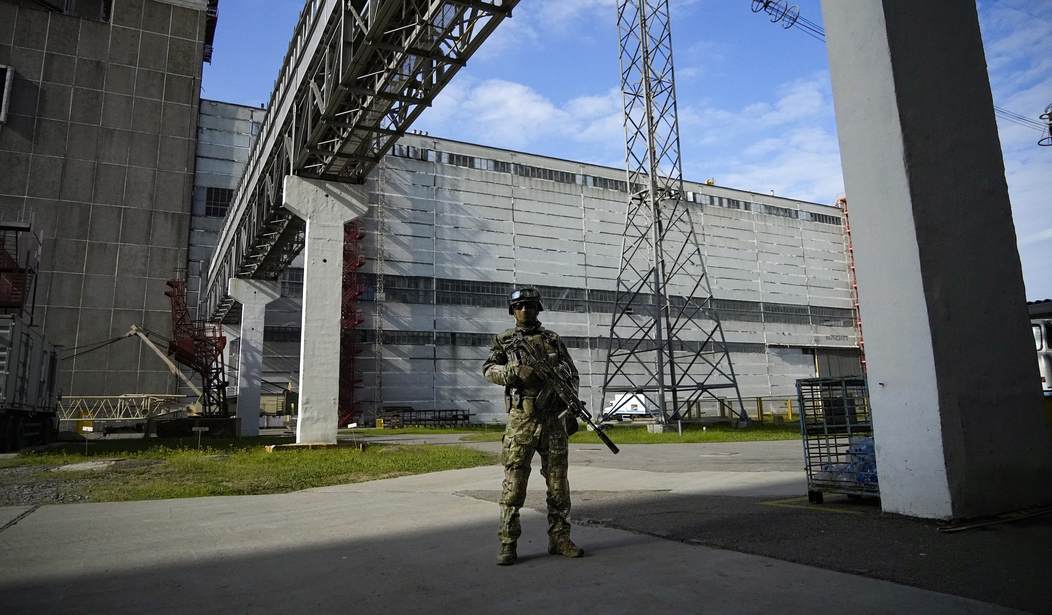The Zaporizhzhia nuclear power plant once again lost its connection to the power grid, leaving the plant with a tenuous link to a reserve line to supply the reactor with power for cooling and other emergency needs. It’s the second time the plant has been forced to rely on the reserve line to stave off disaster, the last instance being August 25. Then, as it is now, the cause for the disconnection was artillery shelling from both sides.
This time, the International Atomic Energy Agency (IAEA), which arrived at the plant on Thursday, gave technical assistance. Director General of the IAEA Rafael Mariano Grossi wants to have a permanent presence of IAEA officials onsite to ensure the safety of the plant.
“We believe it was important for the agency to be there permanently,” he said. “The difference between being there and not being there is like day and night,” according to the IAEA statement.
“Our team on the ground received direct, fast and reliable information about the latest significant development affecting the plant’s external power situation, as well as the operational status of the reactors. We already have a better understanding of the functionality of the reserve power line in connecting the facility to the grid. This is crucial information in assessing the overall situation there,” Director General Grossi said.
“The great value of finally having the IAEA permanently present at the Zaporizhzhya Nuclear Power Plant is already abundantly clear. It is a game changer,” he said, adding that the IAEA remained in close contact with its Ukrainian counterparts and continued to receive valuable updates about the situation from them.
“Game changer” or not, there’s no guarantee that Russia will allow the technicians continued access to the plant. But while Grossi is avoiding putting any overt blame on Russia for the shelling, IAEA experts have concluded that someone is targeting the plant’s power supply.
Mr. Grossi, who has avoided placing blame for the shelling on either the Russians or the Ukrainians, said Friday that it appeared the power supply to the plant was being deliberately targeted.
“It is clear that those who have these military aims know very well that the way to cripple or to do more damage is not to look into the reactors which are enormously sturdy and robust,” he said. Instead, the plant is being hit where it hurts — the power lines essential for running it.
Cindy Vestergaard, a senior fellow and director of the nuclear safeguards program at the Henry L. Stimson Center, said on Saturday, “With Zaporizhzhia, we’re getting to something Russia holds very dear, and that is its power over energy sources. And so nuclear is at the heart of geopolitics, it’s at the heart of energy policies, and of course, for the world to keep the lights on.”
For Ukraine, it’s a question of its sovereign right to control its own energy sources. Zaporizhzhia is as much a symbol as it is a strategic asset. The location of the plant is also smack dab in the middle of the strategic corridor connecting Crimea to eastern Ukraine. If Ukrainian forces can dislodge the Russian military from the plant, they would go a long way toward foiling Putin’s plan to slice off the Donbas region from the rest of Ukraine and create an independent republic of Russian-speaking Slavs — dominated, of course, by Moscow.
With so much at stake for both countries, perhaps it’s not surprising they would risk a serious nuclear accident to achieve their goals.
So the IAEA will be placed in the uncomfortable position of trying to keep the two sides from making a sizable portion of the world’s grain supplies inedible for a few thousand years. But the longer the fighting goes on around the plant, the bigger the chance for something really, really bad to happen before too long.










